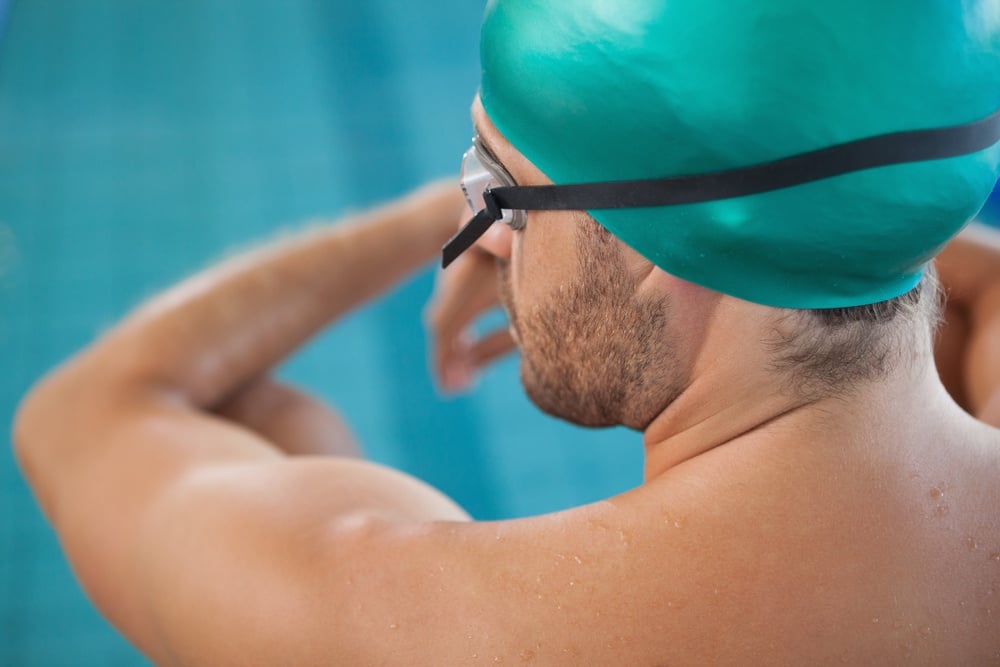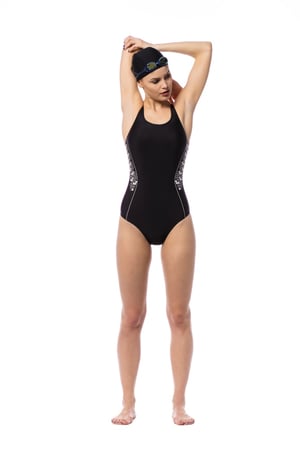Swimmer's Shoulder: Signs, Symptoms, Stretches, and Treatment
August 28th, 2018 | 5 min. read

The shoulder is one of the most complex joints in the human body. It is designed to permit a very wide range of motion. The sport of swimming is unique in that the shoulders are used to propel the weight of the body, against the resistance of water. Maximal range of motion and flexibility is required for the most efficient swimming. Sometimes, this can result in increased shoulder laxity, or instability. Approximately 90 percent of all swimmer's complaints that they bring to their healthcare professional are related to problems with their shoulders, and one of the most notable is a condition known as swimmer’s shoulder.
Here at Coastal Orthopedics, we are committed to helping you return to your active lifestyle here in the beautiful gulf coast of Texas. We are your go-to orthopedic specialists, and will work to get you back in the water as soon as possible.
What is Swimmer's Shoulder?
Swimmer's shoulder, also called shoulder impingement, is a condition where swimmers often aggravate their shoulders while they swim due to the constant joint rotation.
Your shoulder is an extremely mobile joint and because of this, it needs to be well supported by the ligaments and muscles surrounding the joint. You can overwork your ligaments and muscles with things like:
-
Poor technique
-
Over-training
-
Fatigue
-
Previous shoulder injury
-
Hypermobility
-
Use of too large hand paddles
If you continuing doing this, certain injuries can occur like:
-
Ligament and capsule damage
-
Tendonitis and rotator cuff impingement
-
Cartilage damage
You can rotate your shoulder many times (thousands) in just an hour by simply swimming freestyle. This repetitive movement tires out your rotator cuff muscles and being positioned improperly will cause your surrounding tissues and muscles to rub against one another.
Are you concerned that you might have Swimmer's shoulder?
Click the request an appointment today image to see one of our Orthopedic Surgeons, right here in Corpus Christi, Texas!
The irritation and inflammation that occurs afterward can begin causing pain if you keep on swimming. And, your shoulder will keep on feeling this way unless you reduce the inflammation properly as well as retrain and stretch the rotator cuff muscles.
Swimmer's Shoulder Signs
A common sign of swimmer's impingement is pain radiating along the back of your shoulder that feels like it's deeply set in your muscles. In some cases, you may also experience pain along the front of your shoulder.
Repetitive overhead reaching, like with swimming, can increase this pain. The longer you swim during one period, the worse your pain will become. When this occurs, it's referred to as shoulder tendonitis which is tendon inflammation of your biceps and supraspinatus shoulder muscles.
Since you have different parts of your shoulder you can injury when performing a swimming stroke, you may experience a range of pain anywhere from local pain close to your shoulder joint to pain traveling up your neck and shoulder or down your arm.
Symptoms of Swimmer's Shoulder
The most common swimmer's shoulder symptoms include:
- Reduced range of motion in your shoulder compared to your other shoulder.
- Increased joint laxity than with the other shoulder.
- Reduced strength when compared with your other shoulder.
If you're experiencing shoulder pain while swimming, you should consult with a shoulder expert as soon as possible to avoid the problem from becoming worse stop swimming and rest your shoulder to help reduce the inflammation.
Technically speaking, some common characteristics of swimmer's shoulder are:
-
Bicep and supraspinatus tendon inflammation within the subacromial muscles in the back leading to shoulder impingement syndrome.
-
Training errors, like overloading, overtraining and particularly poor stroke technique.
-
The onset of symptoms tends to be linked with altered shoulder joint mobility, posture, muscle performance or neuromuscular control.
-
Many swimmers have innate ligamentous laxity while also having multidirectional shoulder instability, or basically, more joint movement.
However, due to the nature of swimming, all swimmers can develop imbalances in the muscle where the internal rotators and adductors of the arm over-develop. This can leave a weakness of the scapular stabilizers and external rotators, unfortunately, because they're not being used as much.
As a consequence, the poor technique and/or muscle imbalance overuse can lead to anterior capsule laxity. These all peak and enable the humeral head to move up and forward which compromises the subacromial area, causing impingement/irritation.
Swimmer's Shoulder Treatment
Identifying the involved tendons or muscles, the severity or stage of the problem and receiving proper diagnosis will result in the most efficient treatment. A proper plan of treatment includes:
1. Applying ice. Apply directly to the shoulder after training for around 20 minutes.
2. Use anti-inflammatory medications. Use for a few days after the injury to reduce inflammation.
3. Rest. This might mean total rest with no swimming for about 24 to 48 hours depending on the severity. Or, you may be able to swim, but decrease yardage while you avoid butterfly, backstroke or kicking only with your arms at your side. Wait a few days until you're free of pain before you resume swim training.
4.. Get professional passive care. This might include things like:
-
Interferential current
-
Ultrasound
-
Trigger point work
-
Cross friction tendon massage
-
Adjustments to your neck or shoulder
-
Post-isometric relaxation of the muscles involved
5. Do rehabilitation exercises. These will strengthen your weak muscles (particularly your external shoulder rotators). You perform these exercises with minimal weights (three to five pounds) and perform them in an extremely controlled, specific manner. Perform these exercises a few time a week if you've ever had problems with your shoulders. Typically, it's said that for each day you swim on a bad shoulder, you'll require one day of rehab.
6. Modify your swimming training. It's often said hand paddles aren't good for your shoulders. But, Zoomers and other types of fins keep your body elevated in the water; therefore, they might help if you begin experiencing small problems with your shoulders during your workout. Ask the coach or a friend to check your body and arm position. They may even want to videotape you so you can take a look and the coach can discuss the stroke mechanics with you.
Physical Therapy
To complement one or more of the above treatments, a physical therapy program is often a beneficial and necessary treatment for recovering from swimmer's shoulder. The physical therapist or orthopedist can stretch and massage your rotator cuff muscles manually since they can be hard to reach. This releases tension and helps prevent further irritation.
The orthopedist likely have you perform custom exercises if you've healed enough, to target your rotator cuff muscles. By strengthening up these muscles, it can help provide shoulder joint support during activity, helping make it more resistant to injury in the future. Your shoulder orthopedist may additionally help you recondition your shoulder to prevent it from becoming a weak spot down the road.
Sports rehabilitation often benefits athletes and this can help you continue swimming while rehabilitating and implement different techniques to keep pressure off the joints of your shoulders. It’s also important to warm up and cool down your muscles before and after swimming.
Swimmer's Shoulder Stretches
The posterior rotator cuff muscles, pectoral muscles and thoracic spine are the three most common areas often with  stiffness or tightness and require correcting.
stiffness or tightness and require correcting.
The three stretches below will help you address these three areas. Before you perform these stretches, however, if you're experiencing pain in your shoulder, see your physiotherapist to diagnose your injury accurately.
1. Shoulder External Rotators / Lats Stretch
Stand next to the frame of a door, elbows by your side and bending them out 90 degrees. Begin rotating your body forwards while you keep your elbows to your side. Continue rotating until you feel the stretch in your shoulder in the front.
You can also lie on the floor on your back with your elbows to your side, bending out 90 degrees. Wedging your hand under something, keep your shoulder flat on the floor.
2. Pec Major Stretch – Stop Sign
For this stretch, you'll sit on the floor. Extend your legs out to the side, bending your knees and keeping the soles of your feet together. Place your elbows on your knees or thighs while keeping your back straight and begin pushing towards the floor with your forearms.
3. Thoracic Spine Mobility (with thoracic roller or wedge)
Lie down on your back and bend your knees up, placing a wedge underneath your thoracic spine. Allow yourself to relax over this wedge. If it feels uncomfortable, place a towel over the wedge. Beginners will cross their arms over their chest. Advanced individuals will place their arms behind their head. For the upper thoracic, lift your buttocks into the air while pushing through your legs upwards to help increase the force through the wedge. Keep your buttocks down for mid-lower thoracic.
Book Your Appointment at Coastal Orthopedics for Swimmer Shoulder Evaluation and Treatment
Your goal is likely to return to swimming after an injury as quickly as possible. The perfect outcome would be you performing at full power, function, speed and agility while knowing your rehabilitation program has minimized your risk of future injury.
For assistance with any sports or recreational injuries, like swimmer’s shoulder in Texas, request an appointment with Coastal Orthopedics in Corpus Christi by completing our online form or by calling 361-994-1166.
Article written by: Rob Williams, MD
Dr. Williams has been practicing orthopedic surgery in Corpus Christi since 1998. After graduating from Texas Tech hereceived his medical degree from the University of Texas at San Antonio. At the prestigious Campbell Clinic located at the University of Tennessee, Dr. Williams completed not only an Orthopedic Surgery Residency, but an additional year of Fellowship Training in Spine Surgery. Dr. Williams is dedicated to creating an excellent patient experience in the office or in the surgery suite.



